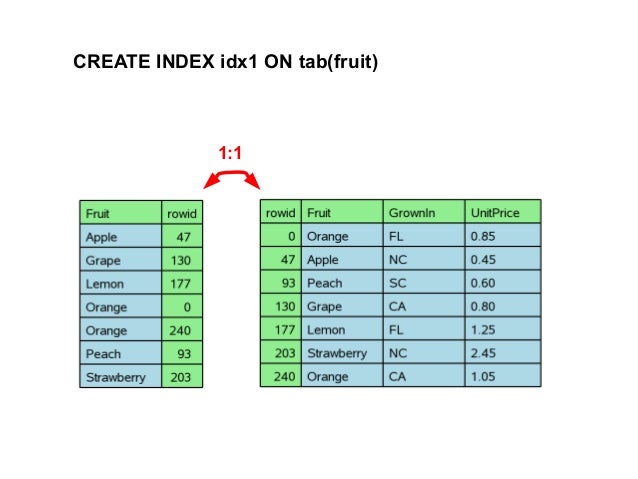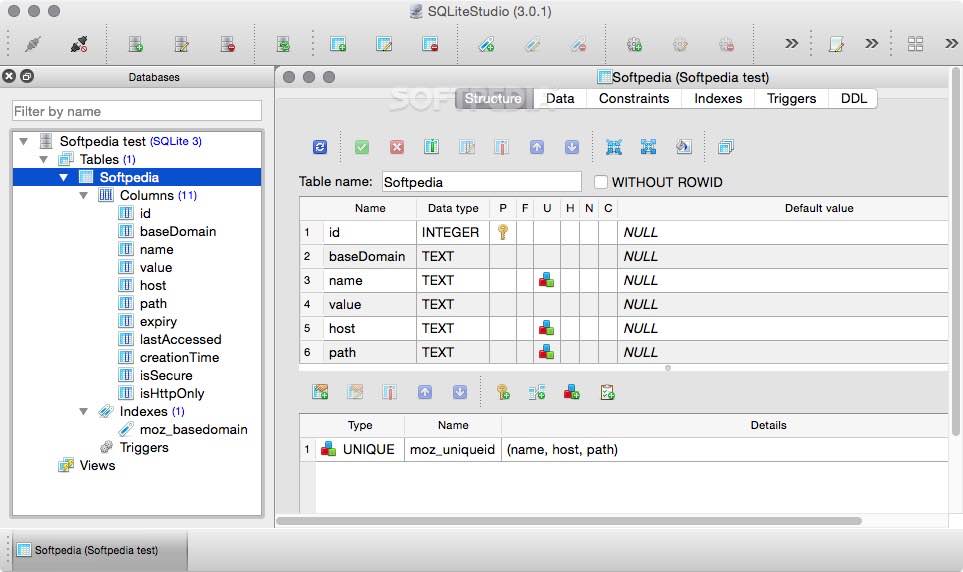
#Sqlite database browser vs sqlitestudio software#
If you don’t have zip software installed, you can download a free zip software such as 7-zip.įirst, use the command line program and navigate to the SQLite directory where the sqlite3.exe file is located: c:\sqlite> Code language: Shell Session ( shell )

The sample database file is ZIP format, therefore, you need to extract it to a folder, for example, C:\sqlite\db.
#Sqlite database browser vs sqlitestudio how to#
In case you want to have the database diagram for reference, you can download both black&white and color versions in PDF format.ĭownload SQLite sample database diagram with color How to connect to SQLite sample database You can download the SQLite sample database using the following link. The playlist_track table is used to reflect this relationship. The relationship between the playlists table and tracks table is many-to-many. Each track may belong to multiple playlists. playlists & playlist_track tables: playlists table store data about playlists.tracks table stores the data of songs.genres table stores music types such as rock, jazz, metal, etc.media_types table stores media types such as MPEG audio and AAC audio files.However, one artist may have multiple albums. albums table stores data about a list of tracks.It is a simple table that contains only the artist id and name. The invoices table stores invoice header data and the invoice_items table stores the invoice line items data. invoices & invoice_items tables: these two tables store invoice data.It also has a field named ReportsTo to specify who reports to whom. employees table stores employees data such as employee id, last name, first name, etc.

There are 11 tables in the chinook sample database. The following database diagram illustrates the chinook database tables and their relationships. We provide you with the SQLite sample database named chinook. The chinook sample database is a good database for practicing with SQL, especially SQLite. Introduction to chinook SQLite sample database At the end of the tutorial, we will show you how to connect to the sample database using the sqlite3 tool. Then, we will give you the links to download the sample database and its diagram. Table_name = self.Summary: in this tutorial, we first introduce you to an SQLite sample database.

Table_to_merge = input("Table to Merge: ")Ĭursor_a.execute("CREATE TABLE IF NOT EXISTS " + new_table_name + " AS SELECT * FROM " + table_name)įor row in cursor_b.execute("SELECT * FROM " + table_name):Ĭursor_a.execute("INSERT INTO " + new_table_name + " VALUES" + str(row) +" ")Ĭursor_a.execute("DROP TABLE IF EXISTS " + table_name) Ĭursor_a.execute("ALTER TABLE " + new_table_name + " RENAME TO " + table_name) Ĭursor_a.execute("DROP TABLE IF EXISTS " + new_table_name) """Basic python script to merge data of 2 !!!IDENTICAL!!!! SQL tables"""Ĭursor_a.execute("SELECT name FROM sqlite_master WHERE type='table' ") Late answer, but you can use: #!/usr/bin/python import sqlite3Ĭon3.execute("ATTACH '" + db2 + "' as dba")įor row in con3.execute("SELECT * FROM dba.sqlite_master WHERE type='table'"):Ĭombine = "INSERT OR IGNORE INTO "+ row + " SELECT * FROM dba." + rowįor root,d_names,f_names in os.walk(directory):įilename, file_extension = os.path.splitext(c_name)īatch_merge('/directory/to/database/files') Here is a simple python code to either merge two database files or scan a directory to find all database files and merge them all together (by simply inserting all data in other files to the first database file found).Note that this code just attaches the databases with the same schema.


 0 kommentar(er)
0 kommentar(er)
